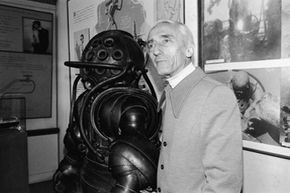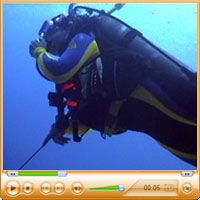Man has always longed to spend some quality time with the creatures of the deep blue. Maybe it's because of the unknown nature of the ocean's depths. For centuries, it was largely a mystery, only viewed from topside. Tales of giant squid and other man-eating aquatic monsters are as much a part of seafaring history as schooners and frigates. Just like outer space, the vastness of the ocean has always captured man's attention and inspired exploration. So much that early attempts at diving date all the way back to the time of Alexander the Great who, legend has it, used a diving bell to journey down as far as 600 feet (182 meters) into the ocean. While this is likely the stuff of legends, genuine strides were made in the late 1600s as innovators like Denis Papin and Edmund Halley made deep sea submersion in a diving bell a reality.
Deep-sea diving suits, known as diving dresses, were next to hit the scene. In 1823, John and Charles Deane were awarded a patent on a diving dress and helmet based on those used by firefighters at the time. The heavy helmet was connected to a hose that ran to the surface and supplied the diver with fresh air. The only problem was that the helmet was open at the bottom and water would leak in if it wasn't kept completely vertical. A man named Augustus Siebe modified the Deane Patent Diving Dress by attaching the helmet to a waterproof suit. The result was the direct precursor to the legendary and familiar MK V deep-sea diving dress.
Advertisement
But despite all these advancements, the diver still had to be attached to the surface via air hose. The key words in the acronym SCUBA are "self-contained," something a diving dress or bell never achieved. So even though man had been trolling the ocean's depths since the 1600s, the first self-contained unit didn't come around until the invention of the scuba set in the middle of the 20th century.




